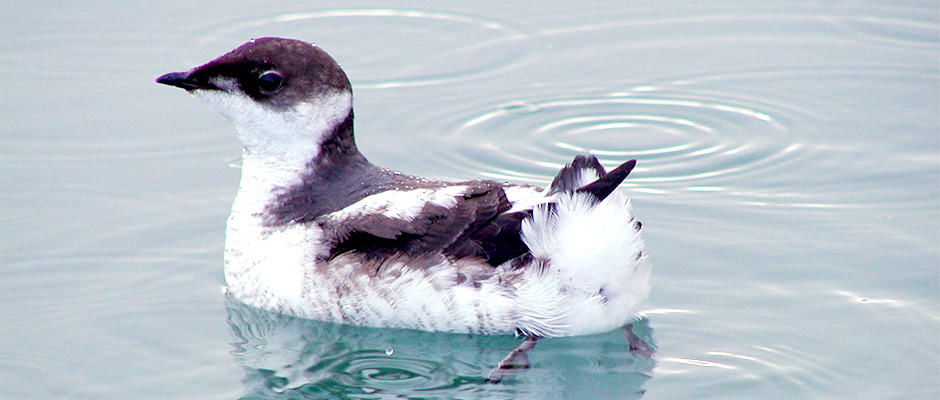Share this article
3.7M acres of old growth remains protected for seabird
In a notice published on Aug. 4, the U.S. Fish and Wildlife Service affirmed that previous critical habitat designations for the threatened marbled murrelet (Brachyramphus marmoratus) were warranted, despite controversy. This notice follows a lawsuit by the American Forest Resource Council in 2012, which claimed that USFWS violated the Endangered Species Act by designating habitat areas which were unoccupied by the bird at the time of its listing.
After the lawsuit was filed, the Obama administration agreed to withdraw the critical habitat designation — a decision widely opposed by conservation groups. In response, USFWS requested and was granted the opportunity to revise the controversial designation. The existing habitat protections remained in place during the revision.
In their most recent notice, USFWS addressed concerns about areas of old growth forest that had been designated as critical habitat despite the current lack of use by marbled murrelets. Twenty-three areas within the critical habitat designation — totaling over 350,000 acres — did not have marbled murrelets present at the time of the bird’s listing. However, all of those areas contained elements deemed by USFWS to be crucial for the birds’ recovery, particularly their preferred nesting areas — flat platforms located on large branches in old growth trees. Furthermore, USFWS asserts that all areas designated in their original assessment existed within the bird’s historic range.
Under these criteria, USFWS affirmed that their previous designations “met the statutory definition of critical habitat” as defined by the Endangered Species Act. The agency stressed that the contested habitat areas provide potential nesting sites for the birds, which have become increasingly less common on the forested landscape of the Pacific Northwest.
The marbled murrelet was first listed as threatened in 1992. The small seabird spends most of its time out on the ocean, coming inland to lay one egg per year in the high branches of old growth trees. While habitat loss has been identified as one of the most significant threats to the species, marbled murrelet populations are also subject to predation, marine pollution, and certain fisheries operations.
USFWS states that stabilizing and increasing the quality and quantity of habitat are the primary means of recovering marbled murrelet populations. This newly affirmed critical habitat designation will serve as a means to that end and will support population recovery efforts for this iconic Pacific seabird.
Header Image: Over 3 million acres of old growth forest have been designated as critical habitat for the marbled murrelet, a threatened species. ©Rich MacIntosh/USFWS








